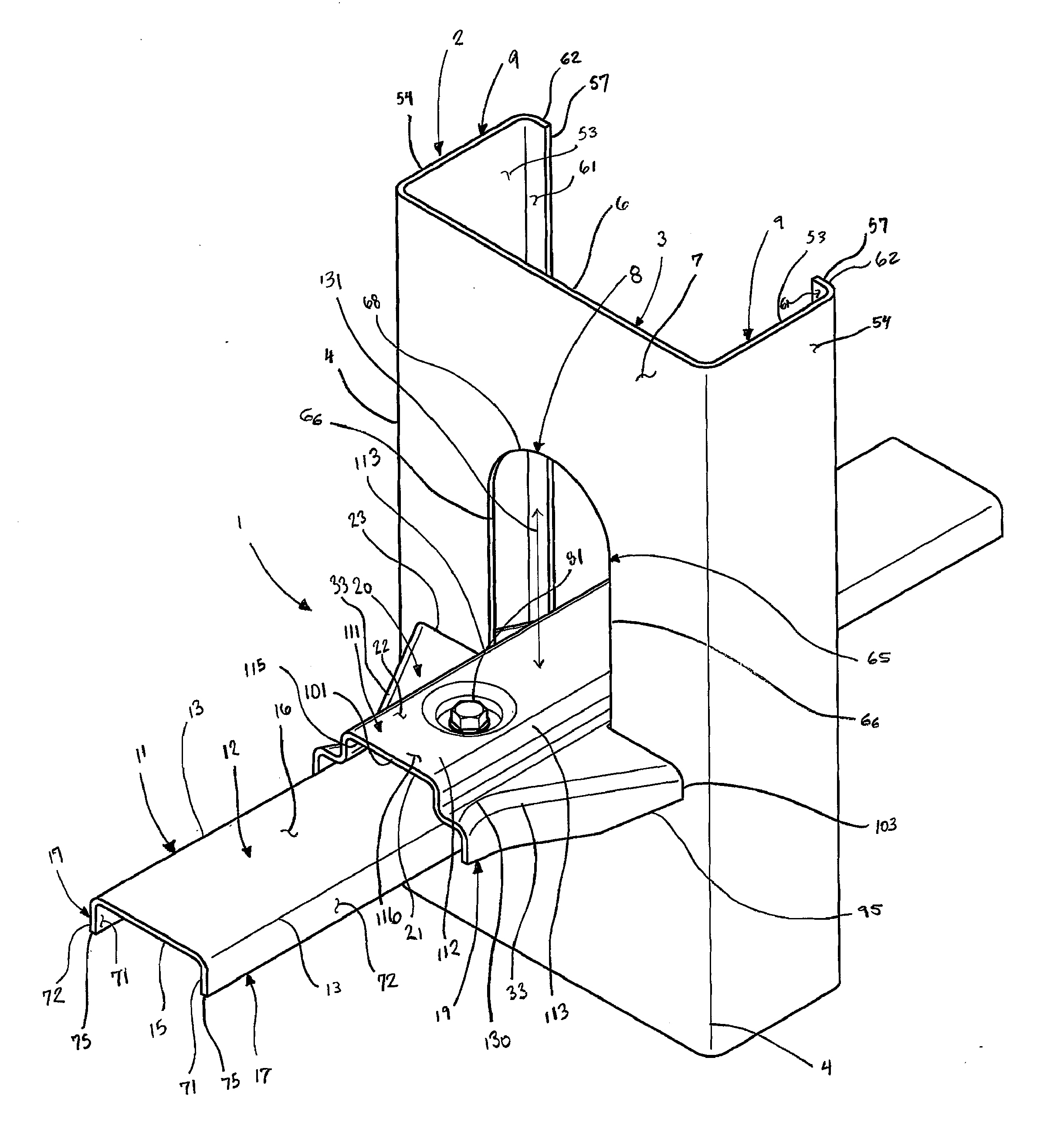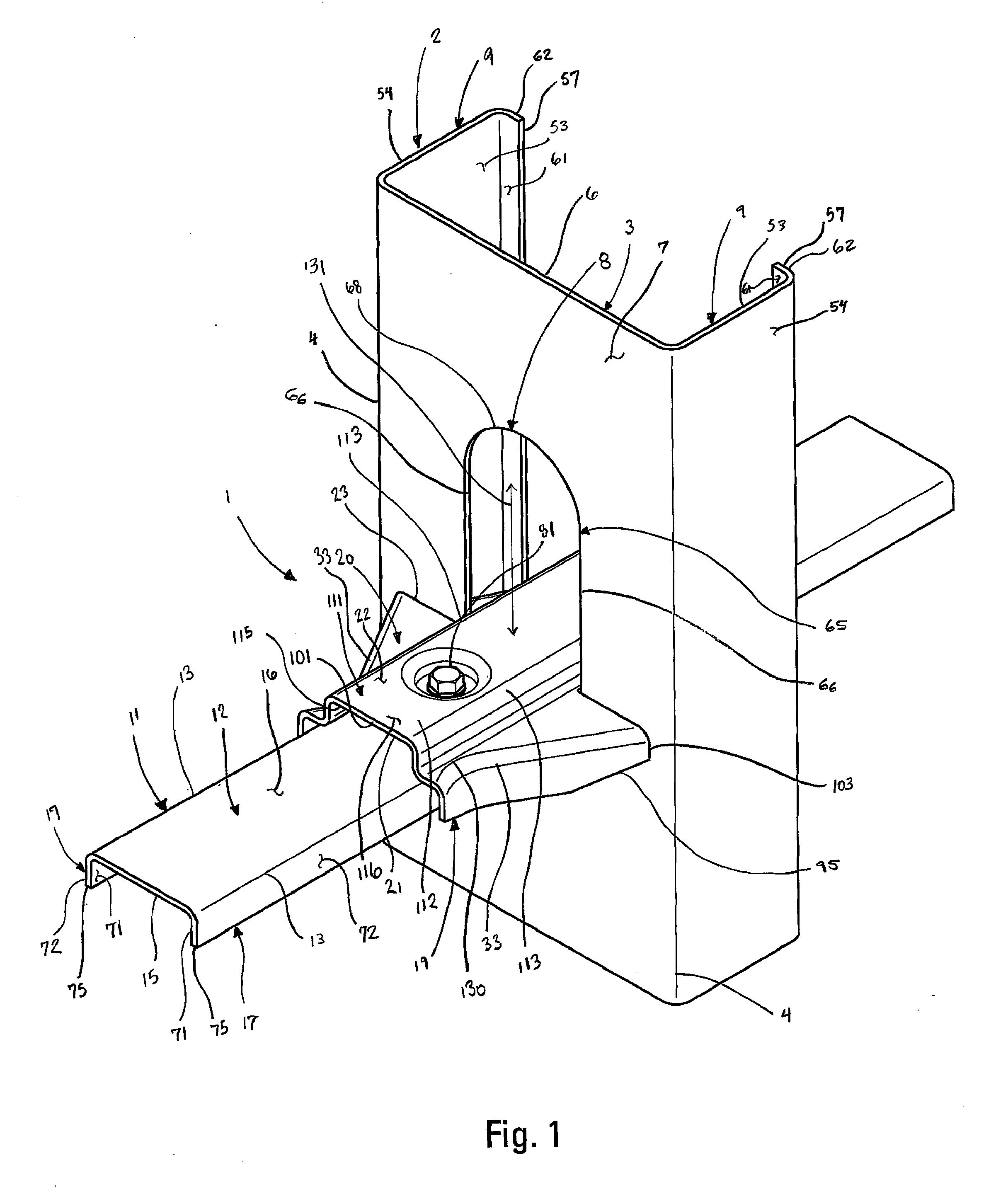Inverted bridging connector
a technology of bridging connectors and studs, which is applied in the direction of rod connections, branching pipes, mechanical equipment, etc., can solve the problems of reducing the service life of the connector
- Summary
- Abstract
- Description
- Claims
- Application Information
AI Technical Summary
Benefits of technology
Problems solved by technology
Method used
Image
Examples
Embodiment Construction
[0044]As shown in FIGS. 1, 4-7 and 10-12, the present invention is a building connector 1 that comprises a substantially vertical wall stud 2, a substantially horizontal bridging member 11, and a bridging connector 19. The structural members are typically made from cold-formed sheet steel, and the bridging connector 19 is preferably made from cold-formed steel, but any or all can be made from other sufficiently strong materials, formed by any appropriate method of manufacture.
[0045]As shown in FIGS. 1-4 and 7-10, the substantially vertical wall stud 2 preferably has a central web 3 with an opening 8, a first side flange 9 integrally attached to the central web 3, and a second side flange 9 integrally attached to the central web 3. The central web 3 is typically bounded by four sides 4, and the central web 3 has an inner surface 6 and an outer surface 7. The opening 8 in the central web is typically elongated vertically, with an edge 65 that has two elongated vertical portions 66 to ...
PUM
 Login to View More
Login to View More Abstract
Description
Claims
Application Information
 Login to View More
Login to View More - R&D
- Intellectual Property
- Life Sciences
- Materials
- Tech Scout
- Unparalleled Data Quality
- Higher Quality Content
- 60% Fewer Hallucinations
Browse by: Latest US Patents, China's latest patents, Technical Efficacy Thesaurus, Application Domain, Technology Topic, Popular Technical Reports.
© 2025 PatSnap. All rights reserved.Legal|Privacy policy|Modern Slavery Act Transparency Statement|Sitemap|About US| Contact US: help@patsnap.com



